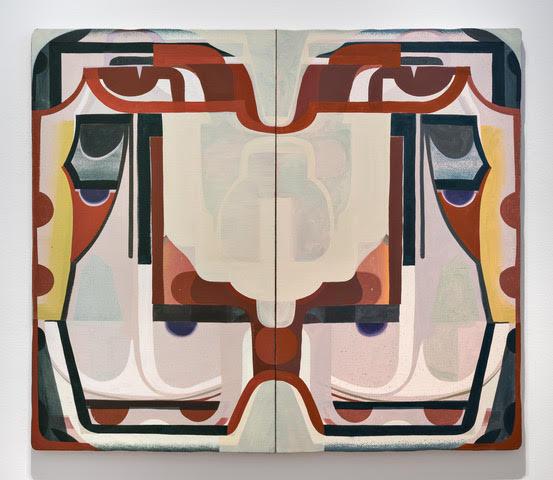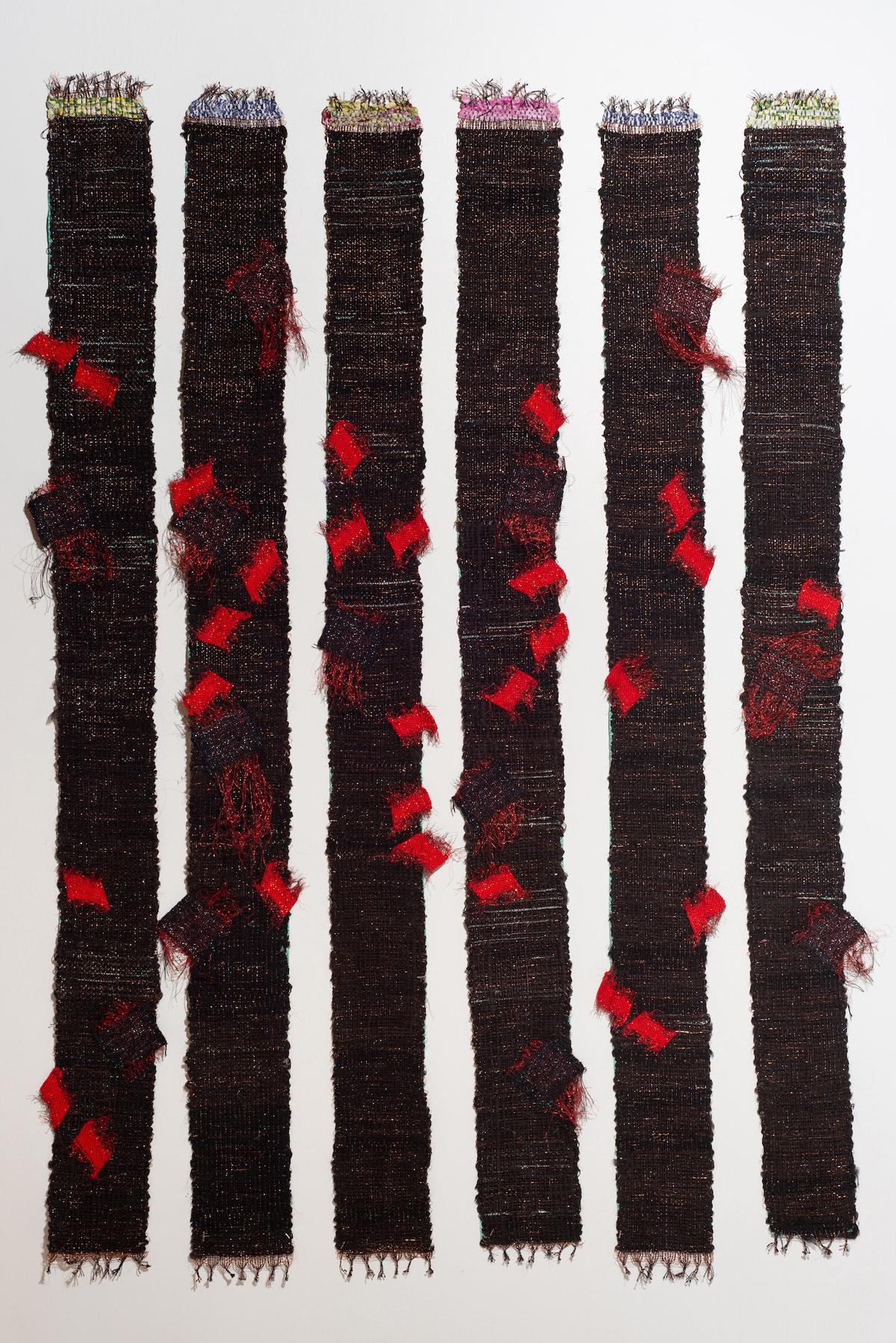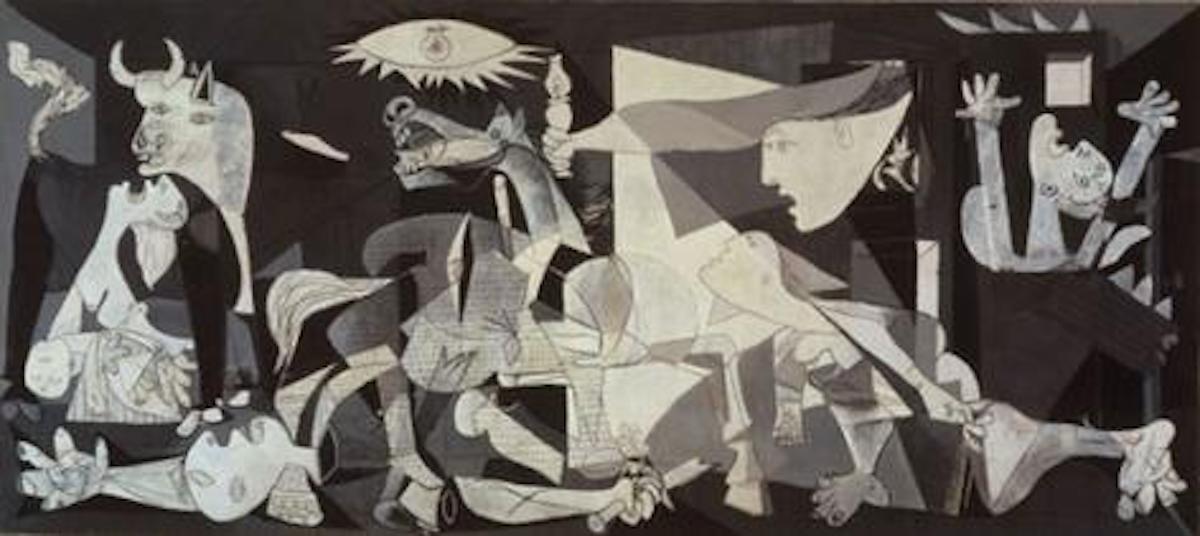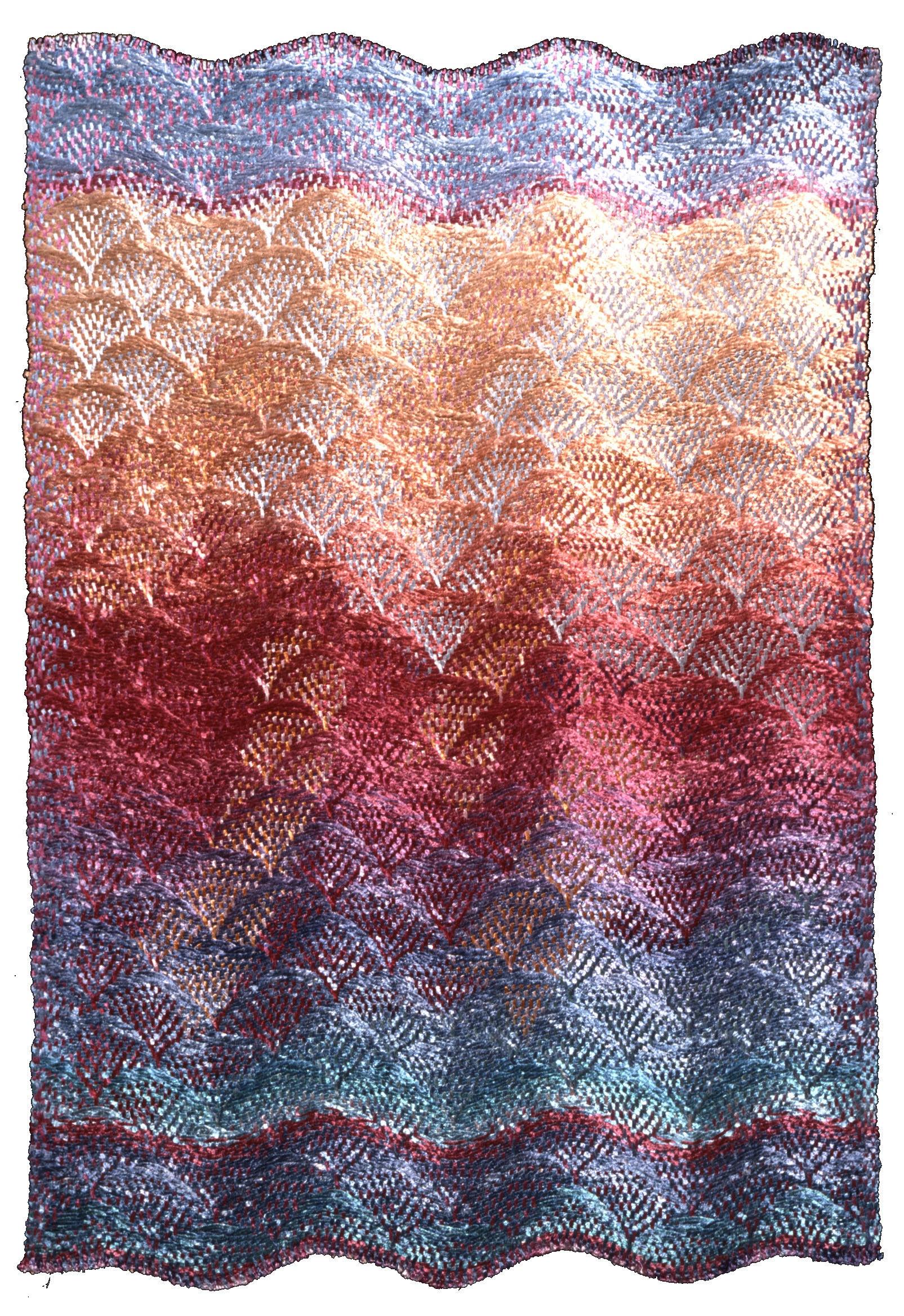Titles often reflect an artist’s inspiration, whether it be arcane experiments with light and color, or a more immediate inspiration from the outer world, such as a stunning sunset rendered into geometric grids.
A title could reflect the artist’s quest to distill the human form into its most crucial shapes, the condensed essence of favorite landscapes, social, historical and/or political commentary.
Or perhaps its title is about generational trauma, the impact of colonialism and arbitrary borders on indigenous populations and the natural world, or the emotional impact of war and fascism. After all, Picasso’s reaction to a Nazi bombing during WWII, Guernica, is arguably the most famous anti-war painting of the 20th century.
































